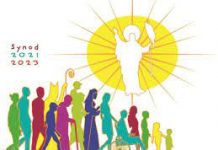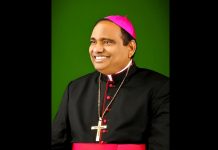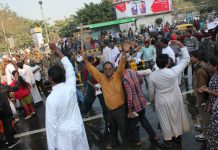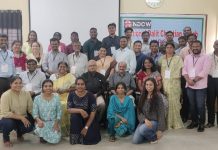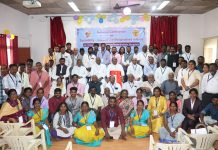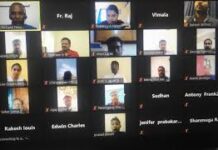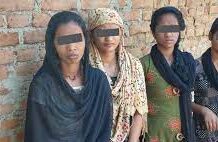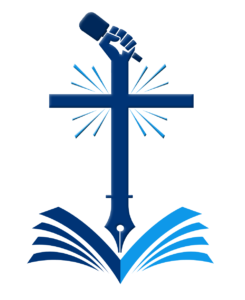By Pradeep Kumar Nayak
The Dalits are the people whom the Indian social system has placed at the lowest stratum of society. They are unfortunately the most misunderstood and neglected section of the Indian populace.
Centuries of ignominy, humiliation and social atrocities have virtually made them vulnerable to a flawed and antiquated social stratification from which there seems to be no escape route. The Dalits are not within the four-fold caste division, but outside it.
The term Dalit means “broken or shattered” in Sanskrit. However, in common parlance, it means “trampled.”
The genesis of the typical Indian caste system is attributed to the Hindu law-giver Manu (who presumably lived in 1200 B.C) who in his book Manusmriti introduced the “Varna” system based on the division of labour that resulted in the division of the population into Brahmins (the priests), Kshatriyas (the warriors), Vaishyas (the merchants) and Shudras (artisans, service providers). Those who were left out of the four-fold division was known as ‘Avarnas’ or ‘Panchamas’ and regarded as untouchable.
Varnas, the occupational group gradually turned into ‘Jatis’ or caste-based groups in course of time. The dichotomy between ‘Savarnas’ and ‘Avarnas’ is a form of social segregation. It resulted in Indian society because of social stratification. Jatis are regarded as endogamous groups but can be exogamous based on “Gotras” or sub-groups.
Mahatma Gandhi coined the term “Harijan” (children of God) to give a sense of dignity to the “Avarnas” or the untouchables. However, Dr. Bhimrao Ambedkar, the architect of the Indian Constitution, disliked it. It was not acceptable to him as it was a derogatory and offensive expression. Dalits were also called “Depressed Classes” in the pre-independent period.
On September 24, 1932, the Poona Pact was signed between Gandhi and Ambedkar to provide inclusive development and to give political representation to the Depressed Classes who later on came to be known as Scheduled Castes. The nomenclature “Scheduled Caste” came in to use after the Government of India Act, 1935 included a list containing these categories of classes.
Anyway, the term “Dalit” was first used by Jyotirao Phule, the Marathi social reformer in the 1880s and was popularized by Ambedkar. Ambedkar and Phule were very much opposed to the caste-based social system that was in vogue in contemporary India and had brought in a life of social exclusion, stigma and dehumanization for the Dalits.
Article 341 of the Constitution authorizes the President of India to notify an extremely backward caste as a Scheduled Caste in due consultation with the Governor of the concerned state and which is subject to the approval of the Parliament. Article 14 of the Constitution of India guarantees equality before the law and equal protection of the law. However, Dalits are the subaltern and marginalized community because of the age-old practice of untouchability and caste-based discrimination. So, Article 17 of the Constitution prohibits the practice of untouchability and is to be regarded as a constitutional safeguard for the Dalits.
According to the 2011 Census of India, the Scheduled Caste (legally accepted term for the Dalits) and Scheduled Tribes constitute 16.2% and 8.2% of the Indian population. After the independence of India, the meaning of the backward Scheduled Caste and Scheduled Tribe communities was defined through Article 341 and Article 342 of the Constitution.
In the Indian context, Scheduled Caste or Dalits mean such castes or races or tribes or parts of or groups within castes, races, or tribes as are deemed under Article 341 of the Constitution to be the Scheduled Caste for the Constitution. In contradiction to it, Article 341 further states, “No person professing a religion other than Hinduism, Buddhism and Sikhism shall be deemed to be a member of the Scheduled Caste.” By this yardstick, Indian Christians are not regarded as Dalits and deprived of the privileges generally their Hindu Dalits counterparts avail of.
CONSTITUTIONAL SAFEGUARDS FOR DALITS
The Constitution of India (Scheduled Castes and Scheduled Tribe) Order, 1950 has compiled complete lists of the castes and tribes of this category and also recommends anti-discriminatory measures to protect them. The untouchability Practices Act, 1955, the SCs and STs (Prevention of Atrocities) Act, 1989 and the Employment of Manual Scavengers and Construction of Dry Latrines (Prohibition) Act, 1993 have been enacted to prevent atrocities against these vulnerable groups. However, it is an irony that contemptuous practice against them persists. Marriage between a Dalit boy or girl with an upper-caste boy or a girl is prohibited and subject to punishment extending to even death by the kangaroo court.
Furthermore, access to a well or source of water or a public place or a temple generally used by the upper caste people is simply risky and suicidal. So, it can be said that the Dalits are virtually cut off from the mainstream of society even in the 21st century. They are living a life of ostracism, so to say, victimized by the social injustice of the forgotten past.
EDUCATIONAL POLICIES FOR THE DALITS
Article 46 of the Constitution of India states, “The state shall promote with special care the educational and economic interests of the weaker section of the society especially the Scheduled Castes and the Scheduled Tribes, and shall protect them from social injustice and all forms of social exploitation.” It is a matter of great concern that the literacy rate among the Scheduled Castes (66.1%) and the Scheduled Tribes (59%) is lower than the national average (74.04%). The National Education Policy (NPE), 1986 revised in 1992 emphasizes the removal of disparities in educational opportunities for the deprived section of the Indian society. It calls for the abolition of tuition fees for Scheduled Castes and the Scheduled Tribes students from primary level to senior secondary levels in government schools.
Moreover, the Eleventh Five Year Plan (2007-2012) gives priority to the educational empowerment of the weaker sections. The Ministry of Human Resource Development (MHRD) in 1987-88 started coaching facilities for the SC/ST students for Class IX to XII. Under Central Government funding, SC/ST students have been provided coaching facilities in Pre-Examination Training Centres (PETCs) to prepare them for competitive examinations conducted by the Union Public Service Commission (UPSC).
This scheme was modified in 2001 to include Other Backward Class (OBC) and religious minority students too. In 1977-78 the Central Government started Pre-Matric Scholarship (PMS) Scheme for the children of scavengers and dry latrine cleaners to provide financial assistance in their study. These apart, Post-Matric Scholarship Scheme, Book Banks, separate SC/ST hostels for girls and boys of this category have been started by the Government to bring them on par with the general caste students. The Central Government has also set up National Overseas Scholarship and Passage Grants for the Dalit students to go to foreign countries for higher study.
The SC/ST community should be grateful to the Government of India for introducing a Reservation Policy for them in Government employment in 1951 for 10 years. But it continues till now. Under the Reservation Policy Scheduled Caste, Scheduled Tribe, OBC and Economically Weaker Section (EWS) avail of 15%, 7.5%, 27% and 10% reservation in Government jobs under the provision of Article 15(4). Education as a tool of empowerment has brought about a drastic change in the living standard of the SC/ST communities.
Anyway, Indian Christians and people who have embraced religions other than Hinduism and originally come from the Scheduled Caste category should also be provided with reservations in jobs to empower and uplift them so that social justice will ultimately be restored.
(Dr Pradeep Kumar Nayak is the Principal of Jeevan Jyoti Mahavidyalaya, Raikia, Kandhamal, Odisha).







